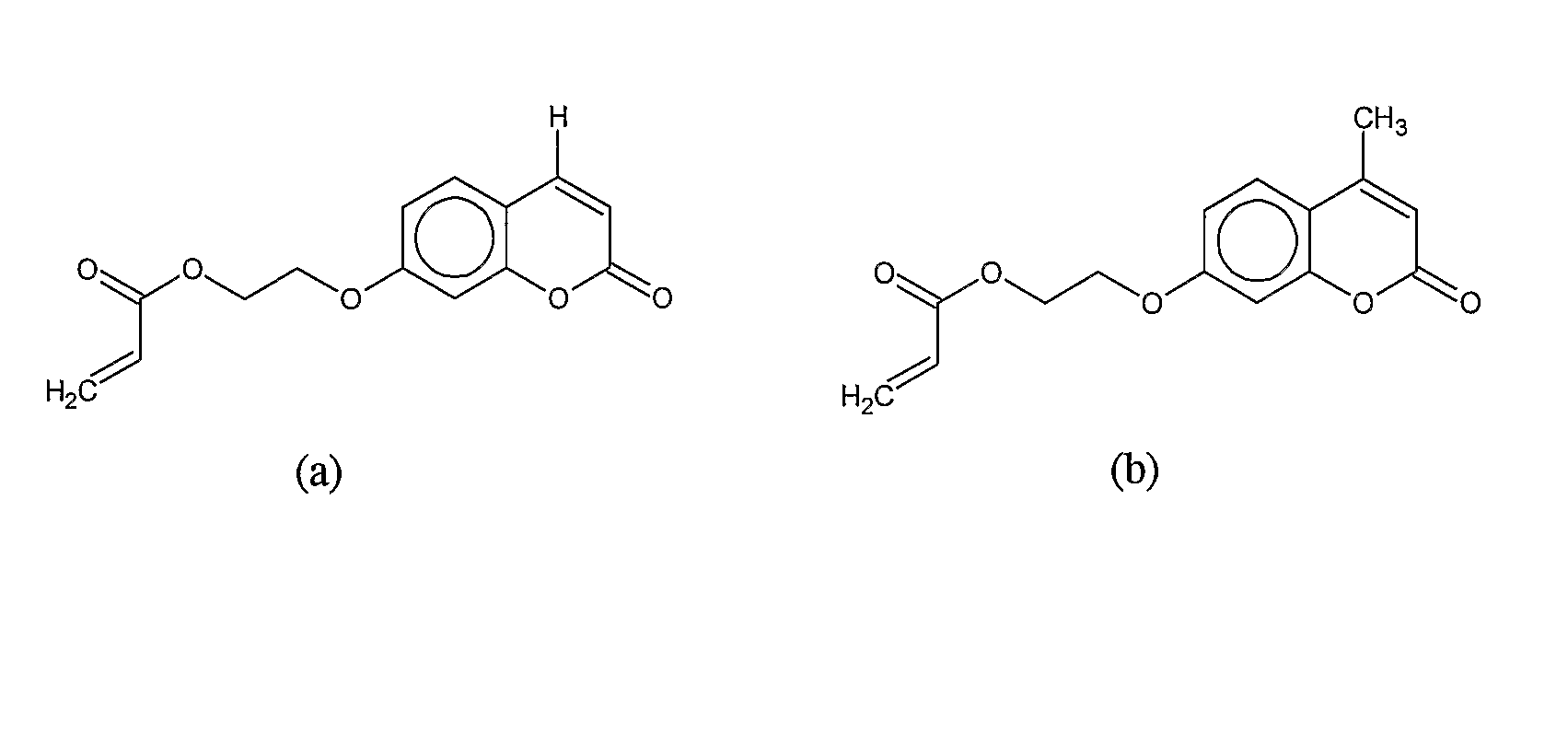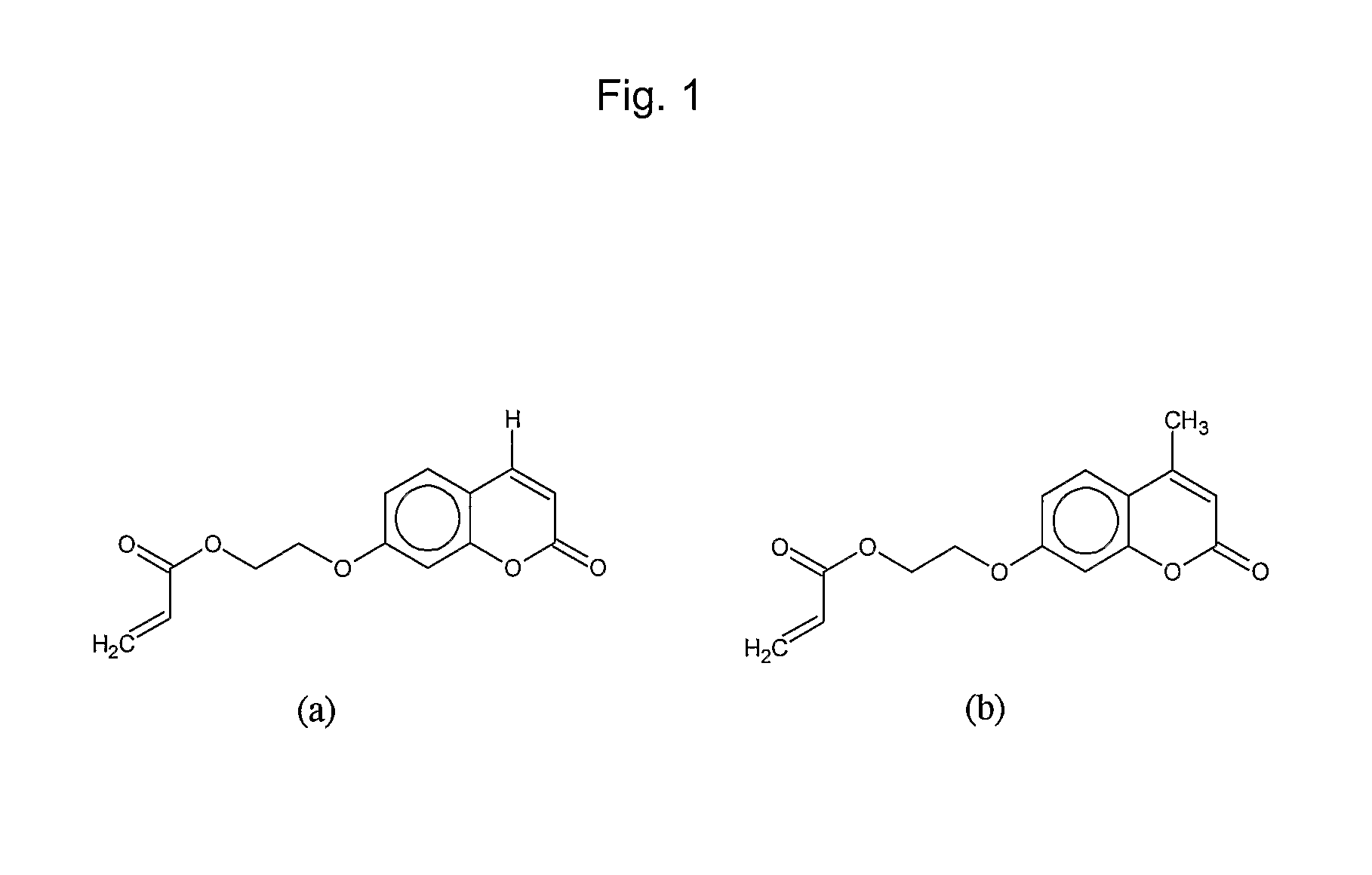Light Activated Shape Memory Co-Polymers
a technology co-polymer, which is applied in the field of light-activated shape memory polymers, can solve the problems of not being able to meet the needs of the user, the existing shape memory polymer lies in the thermal characteristics and tolerances of the material, and the material has not yet been widely used. to achieve the effect of modifying the absorption characteristics of the lasmp
- Summary
- Abstract
- Description
- Claims
- Application Information
AI Technical Summary
Benefits of technology
Problems solved by technology
Method used
Image
Examples
example 1
[0067] A formulation was made with 50 weight percent of a first acrylate monomer, butyl acrylate, 8 weight percent of a second acrylate monomer, methyl methacrylate, 40 weight percent photo-reactive monomer (a) from FIG. 1, 1 weight percent of HDODA and 1 weight percent of benzoyl peroxide. A mixture with a composition described above was polymerized by heating at 65° C. in an oven for 24 hours to obtain the cured shape memory polymer. The polymer was further hardened by irradiation with 350 nm light from 15 min to 120 min to increase crosslinking density and the Tg. The fixed temporary shape samples were irradiated for equal amounts of time from 15 min to 120 min at 254 nm to reduce crossslinking density and lower the Tg. The amount of crosslinking caused by the HDODA combined with the photo-crosslinking determines the Tg range of the material to be from approximately 20° C. (initial uncross linked) to 30° C. (full crosslinking density).
example 2
[0068] A formulation was made with 50 weight percent of an acrylate monomer, butyl acrylate, 48 weight percent photo-reactive monomer (b) from FIG. 1, 1 weight percent of HDODA and 1 weight percent of benzoyl peroxide. A mixture with a composition described above was polymerized by heating at 65° C. in an oven for 24 hours to obtain the cured, soft and malleable shape memory polymer. The polymer was further hardened by irradiation with 350 nm light from 15 min to 120 min to increase crosslinking density and the Tg. The fixed temporary shape samples were irradiated for equal amounts of time from 15 min to 120 min at 254 nm to reduce crossslinking density and lower the Tg. The amount of crosslinking caused by the HDODA combined with the photo-crosslinking determines the Tg range of the material to be from approximately 16° C. (initial uncross linked) to 45° C. (full crosslinking density).
[0069] Besides the applications for environmentally restrictive conditions and space, other possi...
PUM
| Property | Measurement | Unit |
|---|---|---|
| Shape memory effect | aaaaa | aaaaa |
| Light | aaaaa | aaaaa |
Abstract
Description
Claims
Application Information
 Login to View More
Login to View More - R&D
- Intellectual Property
- Life Sciences
- Materials
- Tech Scout
- Unparalleled Data Quality
- Higher Quality Content
- 60% Fewer Hallucinations
Browse by: Latest US Patents, China's latest patents, Technical Efficacy Thesaurus, Application Domain, Technology Topic, Popular Technical Reports.
© 2025 PatSnap. All rights reserved.Legal|Privacy policy|Modern Slavery Act Transparency Statement|Sitemap|About US| Contact US: help@patsnap.com



